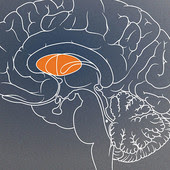
Two Studies Offer Insights into Interoception of Basic Physiological States and Upper Airway Defenses
Two recent studies in mice provide insights into interoception (perception and regulation of signals from inside the body, such as respiration, hunger, etc.). Findings from the first study, which was published in the journal Cell, shed light on airway defense mechanisms and how the brain detects and responds to internal sensations by suggesting that a group of throat-innervating sensory neurons serve as a front-line defense in the upper airways against infiltration and injury within the respiratory tract. The second study, which was published in the journal Neuron, found that insular cortex ongoing activity patterns reliably tracked the gradual return to homeostasis but not changes in behavior. Both studies were supported by the National Center for Complementary and Integrative Health, a component of the National Institutes of Health (NIH), and the NIH Director’s Pioneer Award Program.





















.png)












No hay comentarios:
Publicar un comentario